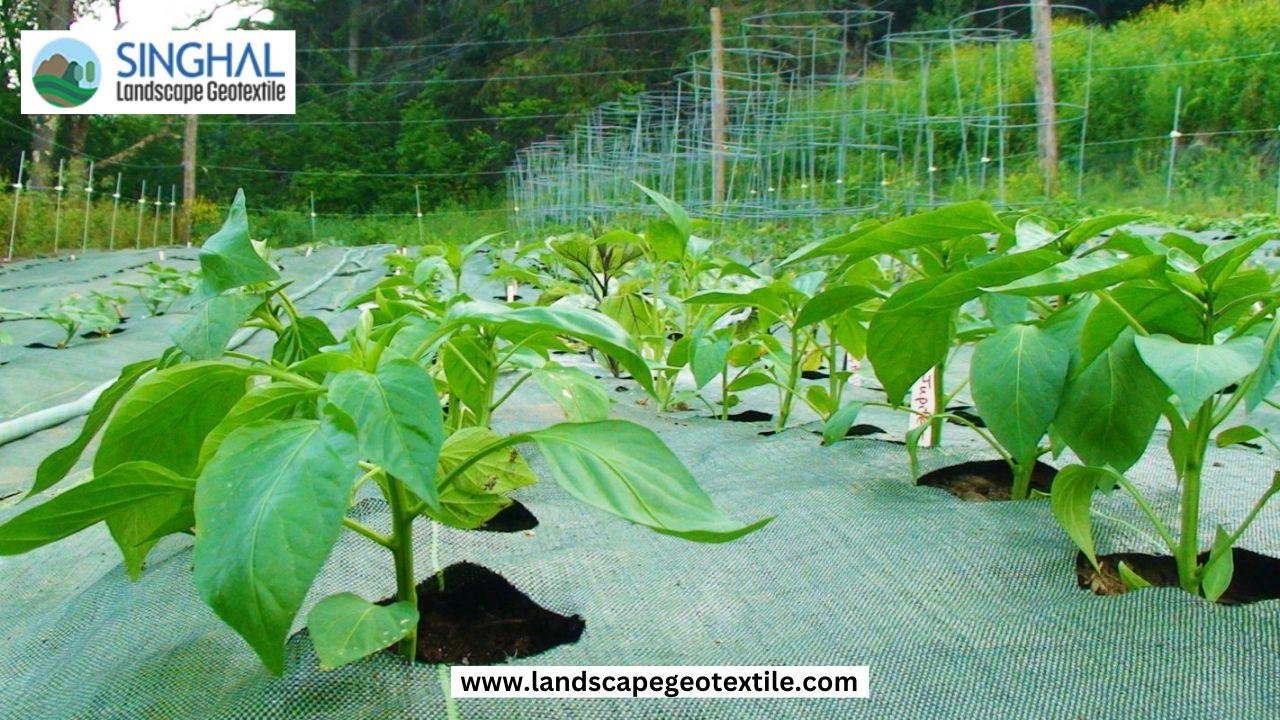Maintaining a perfect, healthy garden is often associated with the challenge, with one of the most sustainable being controlling weeds. These unwanted invaders compete with the general aesthetics of green spaces, not just plants in search of nutrients. Weed control mats, commonly known as weed mats, are one of the most efficient and low maintenance solutions that gardeners have taken over over the years. Whether you're a hobby gardener or a professional landscape designer, the way you manage your weeds can change to understand how weed mats work.
What is a weed mat?
Weed mats are a great and affordable way to keep your garden neat, healthy, and tidy and free of unwanted weeds. Whether you prefer the vast Weed Mat selection available at one of the many Bunnings weed mat departments in Australia, or the equally satisfactory selection available in weed mat Mitre 10, it all comes down to using the right product for your particular gardening purposes. Weed mats, or weed control mats, are often simple to install, require little maintenance, and can be made from all-natural materials or environmentally focused products. Weed control mats are now a standard part of the gardener's toolkit in modern gardens.
The mat can be placed under mulch and gravel on trees, shrubs, flower beds, or garden paths. This is a durable and environmentally friendly way to control weeds without constant use of herbicides. Once you arrange to pick the right weed mat and decide on the proper way to install it, you'll be guaranteed a productive and visually appealing space to cultivate your garden all year round. At the same time, water, air and nutrients allow the plants to get everything they need without getting in the way of weeds.
Benefits of using weed mats
-
Manual Weed Reduction: As soon as it is installed correctly, weed mats reduce the time and effort required to manually eradicate your garden.
-
Chemical Weed Control: For those who want to avoid synthetic herbicides, weed control mats provide a natural barrier to weed growth.
-
Moisture Retention: Reducing evaporation from the floor surface helps to maintain soil moisture levels, which are particularly beneficial in warm climates.
-
Body Temperature Control: Keeps the floor cool and warm in summer and winter, creating a more stable growth environment for the plants.
-
Aesthetically appealing: If the weed mat is covered with mulch or decorative stones, wear a decent and neat garden look.
The Bunnings weed mat selections come in all shapes and sizes and even different qualities. From small backyard gardens to large landscaping options, Bunnings have products that are rated for long-lasting UV resistance.
Available Weed Mat Types
A wide variety of options are available in the market, from light to heavy. Popular varieties include:
-
Woven Weed Mat: Durable, reusable, suitable for permanent beds or large-scale landscape construction projects.
-
Non-woven mat: Perfect for your annual vegetable garden or flower bed.
-
Biologically degradable weed mats: These decompose over time and are perfect for organic gardens.
When it comes to buying a weed mat, is important to determine which mat best suits your particular gardening needs. Two of the most well-liked hardware retailer chains in Australia have extensive weed mat ranges to choose from.
A suitable weed mat shopping
If you are looking to buy, it is important to choose a mat based on your specific garden needs. Banning Virgins are available in a variety of sizes and qualities. Whether you need something for a small garden in your backyard or a large landscape project, Bunings offers UV-resistant and durable products.
Meanwhile, the selection of Weed Mat Miter 10 has been highly praised by garden enthusiasts. Miter 10 offers both environmentally friendly and high-performance varieties suitable for Australian diseases.
Both Bunningsunskrautmatten and Unkraut-Mat Miter 10 products usually come with useful guidelines and shop shops.
Installation Tips for Maximum Effectiveness
Installing weed mats is a complicated process, but it ensures that long-term efficiency is adequate.
-
Delete the area: Remove any existing weeds and soil from the ground before placing the mat.
-
Levels and Wet Floors: Flat the area, lightly moisten the floor to help the mat and stay in place.
-
Decide on the mat: stretch the mat in the desired area and make sure there are no gaps.
-
Ensure edges: Store pins or garden hardness in place, especially in windy areas.
-
Cover it: Cover the mat with mulch or decorative gravel for both aesthetic and functional reasons.
Regular maintenance will check and replace or cut holes or tears as needed to maintain their effectiveness.
Summary
Weed Mats are a great and inexpensive way to keep your garden clean, healthy and invasive weed free. Whether you prefer the broad range of the Banning UNED mat department or the equally robust offer of Weed Mat Miter 10, the key is to choose the right product for your particular garden destination. Weed Control Mats are maintenance physicians and are environmentally friendly. By investing in the right weed mat and following proper installation practices, enjoy a more productive and visually appealing garden all year round.
Weed Mat FAQ
1. Can I plant it through a weed control mat?
Yes, you can. Simply cut the "x" shape onto the mat where you want to place the plants on. Fold the edges and plant them directly on the floor below.
2. Can weed mats be reused?
Many high quality weed control mats, especially woven, are reusable. They can be grown in new locations and repositioned if carefully treated.
3. Who is the largest manufacturer of weed control mat ?
Singhal landscapegeotextile can produce largest amount of weed control mat. Depending on the material and sunlight, weed-qualified weed mats can be taken for 3-10 years. UV resistant mats generally last longer.
4. Can I use weed mats in my vegetable garden?
absolutely. Make sure the material is safe and non-toxic. When using vegetable beds, biodegradable mats are a popular option when it comes to enriching the soil over time.

